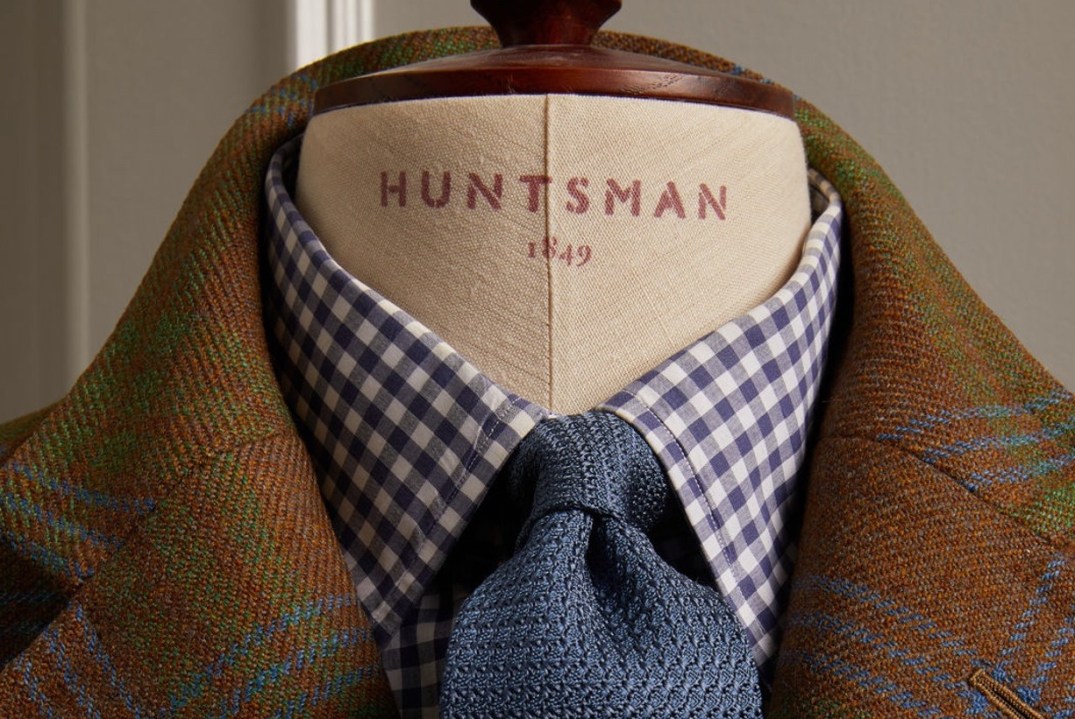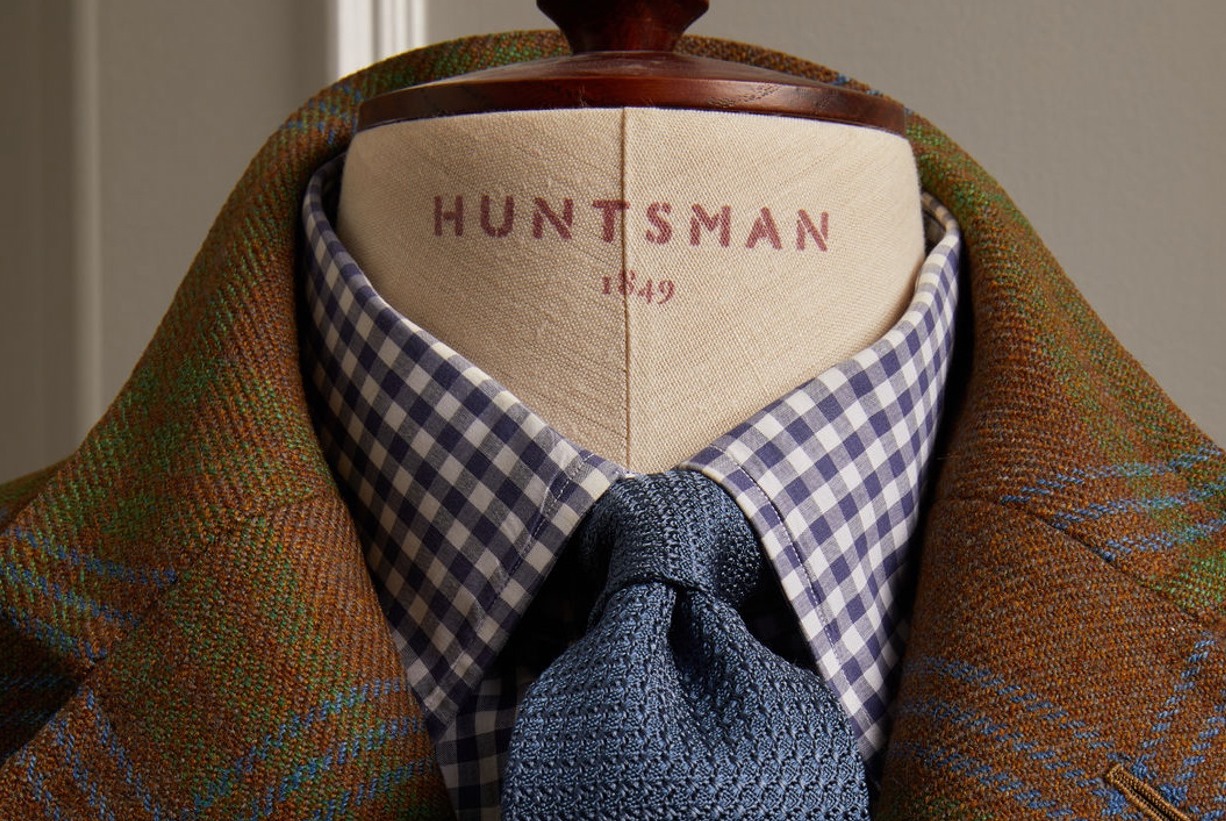The Daily Mail has a new target – Pierre Lagrange. The enormously successful hedge funder has found himself in the cross hairs because he claimed money from Rishi Sunak’s furlough scheme for some of the staff at Huntsman – the All-Blacks of Savile Row tailors – which Pierre bought in 2013. As hit-jobs go, it is as ill-advised as it is misinformed, so I thought I’d explain why.
The clickbait premise by journalist Nick Craven was that Pierre should have paid all the staff out of his own pocket rather than get support from the government. He backed up Lagrange’s evil-hedge-funder status by saying that he was ‘famous for his colourful love life’ – whether by ‘colourful’ he meant being gay, divorced or currently one half of an interracial marriage, I will leave Craven to elaborate. It’s too icky an adjective for me to want to look too closely at.
Should Savile Row be relevant at all in the next 20 years, a great chunk of that credit can go to Pierre Lagrange
There was one factor that was entirely omitted by this article, which was that despite the shaky start – some tailors left unsure of the new direction it may take – Pierre Lagrange is one of the heroes of Savile Row and British tailoring. A declining interest in bespoke clothing – this was before people were not allowed outdoors – could be levelled squarely at an industry unable to find a modern heartbeat for those who see clothes as romantic. The intervention by Lagrange has injected a new interest in British tailoring from domestic and international clients as well as Hollywood’s opportunistic eye. As Covid has hit, it is creative businessmen like Lagrange who can find innovative solutions to complex problems.
Let’s begin with his mission to take the message of British tailoring abroad (note I don’t say just Huntsman but British tailoring as a whole). In 2015 Nick Foulkes hosted an exhibition for Savile Row in Washington D.C at the U.K. Ambassador’s Residence. Pierre helped to fund the operation and went to great lengths to make sure that it was as good as it could possibly be, which included flying in Buffalo Bill’s overcoat (made at Henry Poole) from Wyoming in a climate-controlled container.
This is just one of countless instances where Pierre has shown himself to be a champion for the street’s future viability, celebrating a set of craft skills that the government is doing nothing to help. Nick says that ‘Savile Row is lucky to have him. I think you’d have to be fairly curmudgeonly to not say that he has been good for the street.’ Master Tailor Terry Haste of Kent, Haste & Lachter – who incidentally was one-time head cutter and MD of Huntsman – agrees. He says: ‘We were all delighted when Pierre was running the Savile Row Association, as there was so much more happening, there was real energy. It was sad to see him leave the post.’
Within Huntsman the innovations are setting the tone for what tailors need to be doing to survive. While the article did not specify how many of the 65 staff were furloughed – ‘some’ Nick Craven says – the notion of a tailor employing 65 people in the first place is remarkable. A bespoke suit requires several artisans to create, but not 65. You don’t hire that many people for a tailor’s shop unless you’re trying to achieve something extraordinary and whatever the motives may be, that is 65 jobs in a struggling industry that he has been paying for, as the article states, covering annual eight-figure losses himself.
Furthermore, he’s invested in technology for the company which remains a tough pill to swallow for a ‘handmade’ industry. The ability for someone to create their own tweed is indulgent for sure but it is innovative and helps not just Huntsman but the mills in Scotand that create the tweed too. Mr. Hammick, the robot which is sent round the world to help with international fittings (Colin Hammick is the houses most famous head cutter) has meant the incumbent head cutter, Dario Carnera (son of legendary shoe maker John Carnera), can keep processing orders to clients who aren’t able to visit London. Huntsman are in fact currently touring America, there is a permanent foothold in New York (thanks to Pierre) but the appetite for British tailoring has allowed for a tour of the major American cities by the Huntsman tailors.
Should Savile Row be relevant at all in the next 20 years, while one can also mention Anda Rowland, Gaziano & Girling, Thom Sweeney (who have opened up round the corner), a great chunk of that credit can go to Pierre Lagrange. The bespoke suit, is of course an expensive, indulgent, luxury item, but it is an icon of Britain’s cultural history. Money from China had helped bolster the financial standing of Savile Row back in the noughties, but several of the houses bought up by Chinese finance have padlocked chains on the door handles and the shops have been gutted. Over half of the shops on Savile Row have no tenancy because businesses can’t pay the bills, but Huntsman manages to inspire a soon-to-be trilogy of films and exports the good name of British tailoring almost better than anyone else. While the Government have been great with protecting jobs during the pandemic, part of the reason Rishi Sunak is popular no doubt, their efforts to protect British heritage brands has been woeful, and that pre-dates Coronavirus. It has required people like Pierre Lagrange to keep the pulse steady, the street would be in even bigger trouble without him.







Comments